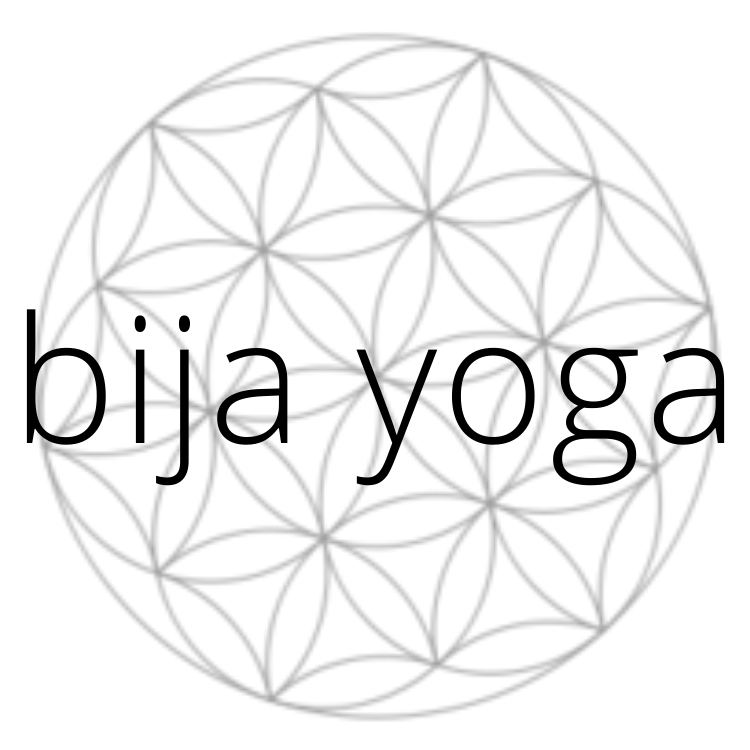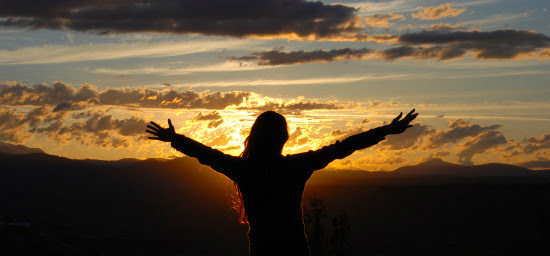A Stable and Solid Foundation : Establishing a Personal Practice
/"Practice that is done over a long period of time, without interruption and with sincere devotion and enthusiasm becomes a firmly rooted, stable, and solid foundation."
Yoga Sutras of Patanjali 1.14
I'll be starting my annual 21-Day Summer Yoga Immersion in just few weeks and it's one of my favorite series to teach. I love to watch each student set out on this transformative journey, face challenges and doubts, live up to the commitment that they have made to themselves and experience the power of establishing a home yoga practice. Creating a home practice is about making yoga a way of life rather than just something you do once a week. There are great advantages to practicing with a group and an experienced teacher, but supplementing that with your own personal practice will take you to a much deeper level. It offers you the opportunity to deepen your practice, to really make it your own. You can have much deeper experience of self-exploration and self-care. And think of how great you feel when you leave a yoga class - relaxed, alive, connected, present. Now imagine starting each day that way.
According to the Yoga Sutra's, one of the foundational text on yoga and meditation(often called the science of happiness), what a daily practice offers you is "a firmly rooted, stable and solid foundation" from which to live your life, from which to weather the constant change & challenges that life gives you and from which to create and maintain your own positive life changes. According to the Yoga Sutras this kind of foundation only comes from a practice that is done "consistently over a long period of time and with sincere devotion and enthusiasm." Like a consistent drip of water can eventually wear down solid rock, it is the consistency of your practice has power. It takes devotion and discipline to make it to your mat or meditation cushioneveryday, especially during the most difficult times in your life. But you show up for yourself exactly as you are in that moment and with a sense of enthusiasm for the practice of yoga - and remember, yoga isn't just the practice of downward dogs and sun salutations. Yoga is "the state of being where the churning fluctuations of thought and emotion have come to stillness and we are able to rest in pure awareness - our natural state." - Yoga Sutras of Patanjali, 1.2
Tips for Starting and Maintaining a Daily Yoga Practice
Set your intention - Begin by getting really clear on what you want to commit to and why. Take the time to get quiet, check in with yourself and maybe spend some time writing. Ask yourself what you need/want from a daily practice and what type of daily practice would best serve you. Maybe you want to lose weight, so a more physical or vigorous practice is needed, maybe you need something more soothing or meditative.
Choose a time of day - Decide on a time to practice each day. Depending on your schedule, it may be different everyday. Choose a time that works best for you. It can be really wonderful to start your day with your practice, but if you’re not a morning person it may just make it more difficult. Be realistic and honest with yourself and remember a short (even 10 minutes) consistent daily practice is more powerful than a longer, more intense practice that is not consistent. Schedule it into your day. Write it on your calendar, set alarms on your phone or some other reminder.
Make space - It’s really important to have a space to practice and all the supplies you'll need set up in advance. Choose a space where you will not be disturbed that is clean, quiet, private and contains some beauty~ near a window where you can see the sky or trees can be nice or have a few objects in your space that are beautiful or meaningful. Make it easy. Place whatever supplies or props you'll need there, your mat, cushion, blocks. If you plan to use a video or book or magazine have it ready to go in advance.
4. Have a plan, but be open and flexible - It's great to have an outline of your practice or use a video, online class, book or magazine when you're getting started. (I have a number of guided meditations you can use HERE. )This will help you keep you on track and prevent you from just spacing out on your mat. That being said, it's always important to listen to and trust your body and heart to lead you in your practice. Don't force something that doesn't feel right. Begin by tuning in to yourself and simply observing what's happening in your body, heart and mind and let your practice honor whatever that is. Don’t be afraid to mix it up - take your mat outside in nice weather, it can be really wonderful to experience the natural world as part of your practice - in the woods, by some water or even in a park in the city - Try playing some of your favorite music and let that inspire and lead your practice. (I have some playlists you can use HERE.)Relax, lighten up and have some fun with your practice. The more you mix up and enjoy your practice the more likely you are to keep it up.
5. Keep track of your progress - Find a way to track your progress, you could go old school writing each practice on your calendar or use one of the many apps available. I recommend the Insight Timer App. It's great to time your practice, keep track of your stats, it offers guided meditations and has an online community that can be inspiring to your practice.
Tips for practicing on your own
Before you come to your mat determine how much time you have to practice and what kind of practice would best serve you. For example if it’s first thing in the morning you may want an energizing practice – this might include a pranayama practice like Kapalabhati, a strengthening warm up vinyasa like sun salutations, and back bending/heart opening postures such as bridge, fish, bow and wheel, which are energizing.
If it’s in the evening or if you’re feeling tired a more gentle, stretchy, restorative practice might be in order. Your practice should focus on seated forward bends, twists and inversions, all of which have a quieting, internal focus.
If you're feeling agitated, distracted or spacey or are having a hard time concentrating, a grounding and/or balancing practice might be what you need. Postures like mountain pose, fierce or chair pose, goddess pose, tree. Alternate Nostril Breath would be a wonderful balancing, quieting breath for either of these practices.
Thinking about your daily activities can also help you determine what practice would best suit you. If you are a runner or cyclist or have been hiking or mountain climbing, you may want to focus on stretching the legs and hamstrings with postures like bada konasasna, seated forward fold,pyramid pose or star gazer. If you spend all day sitting at a desk on a computer you may want to focus on postures that stretch and open the heart shoulders, such as cowface arms, wide angle forward bend with hands laced behind the back and posture to open the hips like bada konasana, pigeon and lunges.
You could also choose to do a balanced well-rounded practice that includes a bit from each type of posture - moving from warm ups to energizing postures ending with relaxing restorative forward bends and twists.
~ start with breath and meditation – Start with conscious breath to help you connect with and relax your body, to quiet the mind and to get a sense of connecting with your heart and move into a three part yogic breath. Simply notice what you're feeling in body mind and heart and let this inspire your practice. Take a moment to set an intention or aspiration for you practice or for your day. Maybe begin by asking your self "What do I need in this moment?"
~move into warm ups - Perhaps begin by stretching the neck and shoulders, moving the spine in all six directions either seated or from table pose - front & back with cat/dog stretch, side stretch to each side and a gentle twist to each side.
Listening to your body work your way to deeper more intense postures as mentioned above. allow yourself some time for cool down postures such as seated forward bends or twists.
~ always take time for savasana and deep relaxation at the end of your practice - this allows you to rest, restore the body and mind and to integrate the postures. Allow yourself to enjoy the state of yoga, the stillness and aliveness you have cultivated with your practice.


